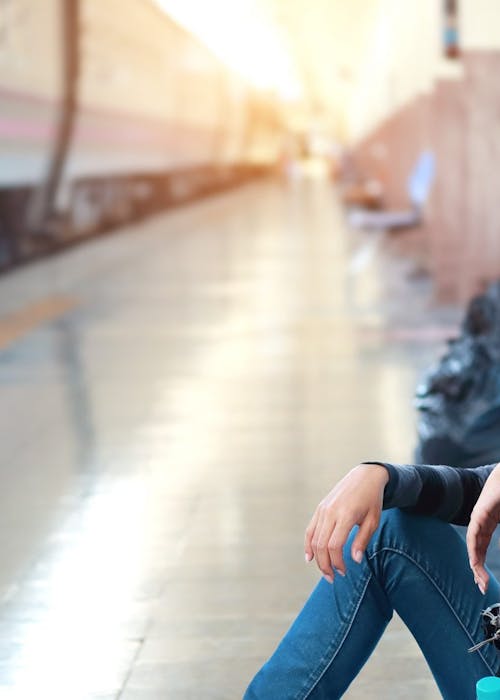

Youth Homelessness Matters: What Can We Do?
Insights
April 19, 2023
By: Julie Kronick, Laura Jankstrom, & Caitlyn Passaretti
Today is Youth Homelessness Matters Day, an annual day of awareness to promote understanding of youth homelessness, its root causes and the steps we can take as a community to promote housing stability for youth. The New York State Office of Children and Family Services (OCFS) runs a Runaway and Homeless Youth (RHY) program that operates in 25 counties and New York City. In NYC, the Department of Youth and Community Development (DYCD) runs a 714-bed youth shelter system, which has lost 100 beds since 2021 and is frequently strained. Read an insightful City Limits article from last summer detailing the capacity issues with NYC’s youth shelter system here. Some of the state’s most vulnerable youth are overrepresented in the RHY system, with many identifying as LGBTQ+, exiting the child welfare or juvenile justice systems, experiencing sexual exploitation, or struggling as young/expecting parents. Additionally, the recent influx of unaccompanied minors from across the border has increased the need for housing supports for youth. According to a DHS report on RHY, during Fiscal Year 2022 in NYC, 1,881 youth up to age 24 were served in Crisis Services Programs and 1,146 were served in Transitional Independent Living (TIL) support programs.
As a child advocacy organization, promoting housing stability is a huge priority for CCC. It is deeply connected to our efforts in addressing poverty reduction, child welfare, mental health support, affordable housing, and housing subsidy access. As the State legislature works to finalize the Fiscal Year 2023-24 Budget and we enter the next stage of budget season at the City level, CCC is advocating for several investments that have the potential to support youth experiencing or at risk for homelessness.
Policies Supporting Youth
CityFHEPS
In NYC Fiscal Year 2022, less than 6% of youth exited a DYCD Runaway and Homeless Youth residential program into their own apartment or supportive housing, compared to 39% being discharged back into homelessness. In addition, our partners at the Schuyler Center estimate that as many 1 in 3 youth aging out of foster care will exit into a homeless shelter. Currently, neither youth transitioning out of the RHY system nor youth aging out of foster care may utilize housing subsidy vouchers without having to enter the adult DHS shelter system and there is a 90-day rule for eligibility that forces those in shelter to remain there for 3 months before they can apply for assistance. CCC has testified numerous times this year in support of reforming CityFHEPS rental assistance vouchers to make them more accessible. Our City priorities around rental assistance and youth are:
- Expand CityFHEPS eligibility to include individuals that enter city shelters through pathways other than just DHS, including HPD, domestic violence survivors, and runaway youth;
- Make youth categorically eligible for CityFHEPS vouchers;
- Eliminate the 90-day stay requirement for runaway and child welfare and justice-involved youth once they enter the DHS shelter system.
- In addition to CityFHEPS reform, we are advocating to maintain funding for the 16 Housing Specialists in the DYCD-RHY System after federal funding expires.
As we continue City level advocacy, we will stay vocal about the importance of amending this eligibility criteria to combat youth homelessness. Please take a moment to participate in our Housing and Economic Security take action now. Read some of our testimony in support of CityFHEPS reform: Recommendations on Public Safety and Youth and Community Investments; Recommendations on Housing Stability for Families with Children; Recommendations on Enhancing the General Welfare of NYC Residents.
Child Welfare Housing Subsidy
New York’s Child Welfare Housing Subsidy is a monthly subsidy for families involved in the child welfare system and youth in foster care aged 18-21 experiencing housing instability. Although the subsidy is meant to support families staying together and youth who are aging out of foster care, the maximum monthly subsidy is only $300 (and has been since 1988) and is seriously insufficient based on the current cost of housing in New York. The State’s median monthly gross residential rent is $1,390 and in NYC it is $1,579. CCC’s take action at the state level for Youth Opportunity and Child Welfare includes support of the Assembly’s proposal to increase the value of the Child Welfare Housing Subsidy from $300 to $725. Click here to participate in the take action now. CCC testified in support of this increase earlier this year, which you can read here. Read the Schuyler Center’s 2-page fact sheet on the Child Welfare Housing Subsidy here.
Summer Youth Employment
Connecting youth to employment and skill development opportunities is an important way to combat youth homelessness. Economic independence and stability help young New Yorkers maintain stable housing and vice versa. Read CCC’s testimony on addressing youth unemployment in NYC here for data on housing and job opportunities. As we continue City level advocacy, we will keep advocating for youth opportunities, but you can also take action now on the State level for Youth Opportunity and Family Supports.
CCC’s priorities also recognize that thousands of teens and youth reside in DHS shelters with their families, are doubled up in overcrowded housing situations, or are at risk for homelessness across the state. We have a current take action on housing and economic security that addresses investments to help. Please take action with us and stay connected to our efforts as we head into the City Budget season. Also, read CCC’s Executive Director Jennifer March’s Op-ed in the Gotham Gazette for more on youth and family priorities around community well-being and safety, including addressing homelessness.
Youth homelessness absolutely matters today and every day. It is up to us and our communities to ensure the youngest New Yorkers stay healthy, housed, educated, and safe, which includes protecting youth from housing insecurity.


